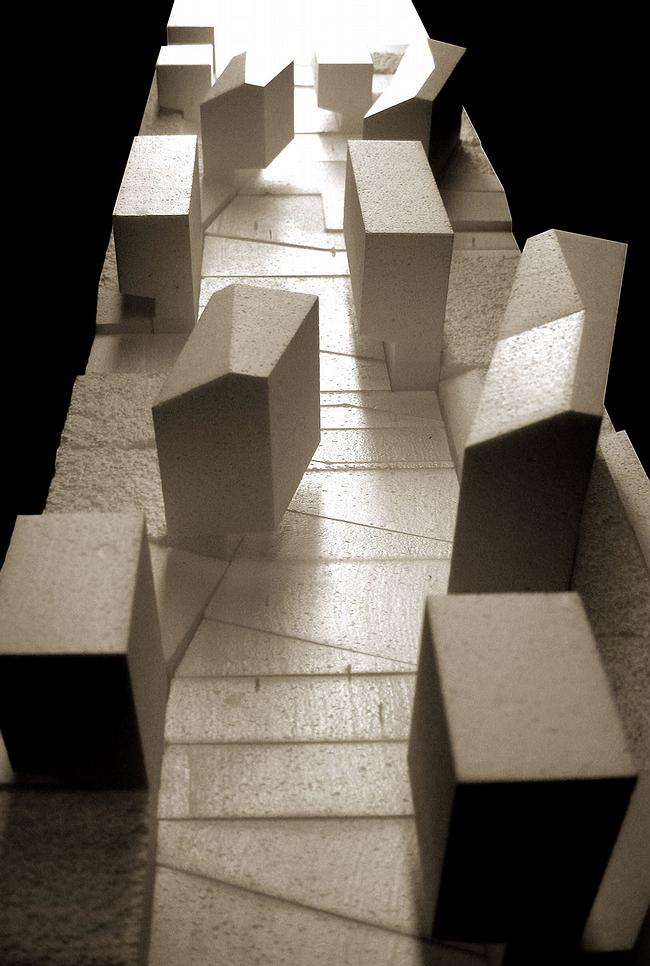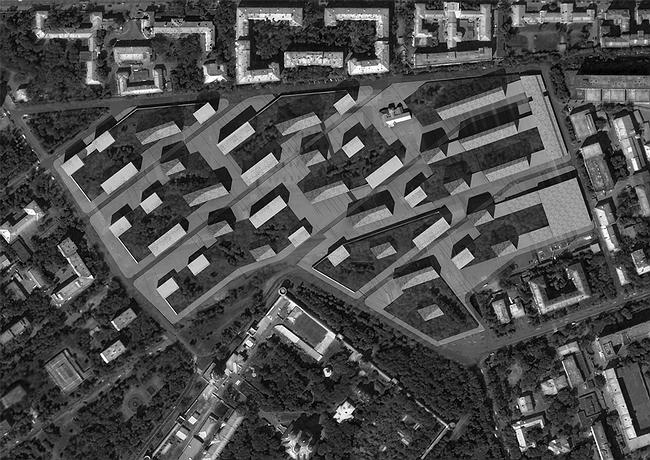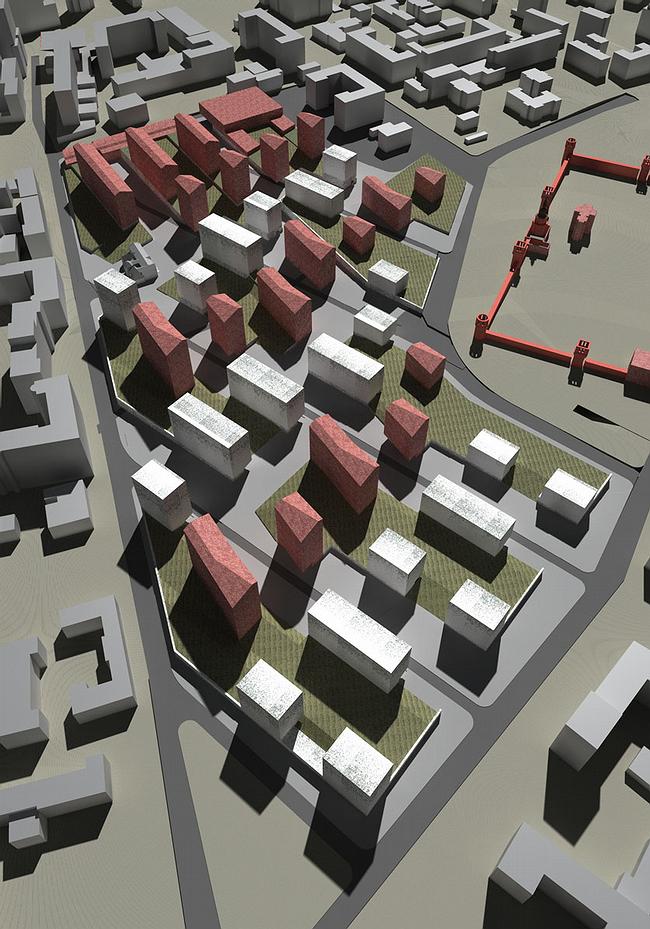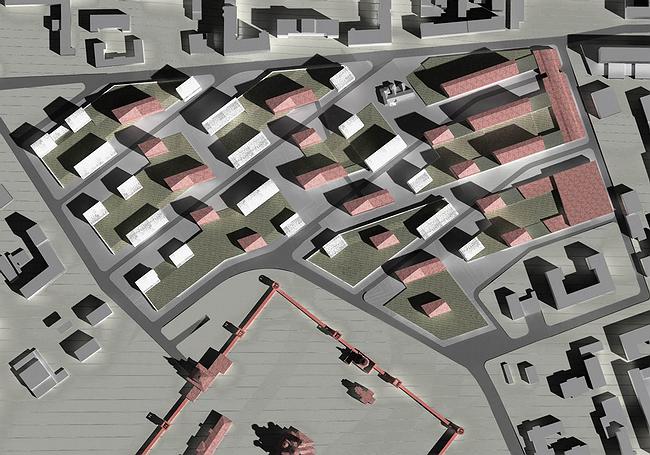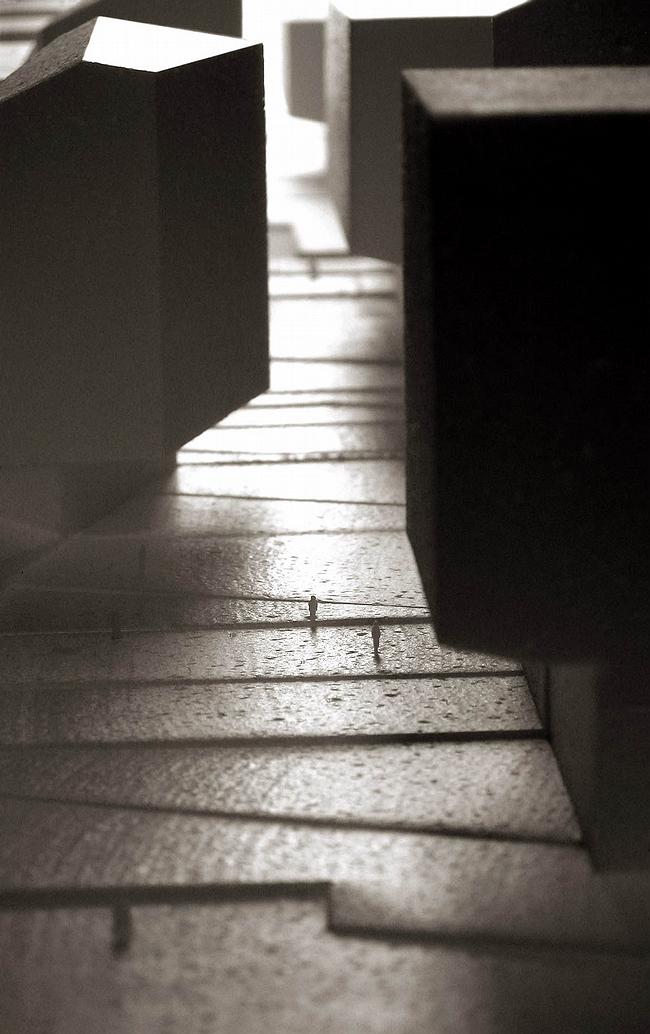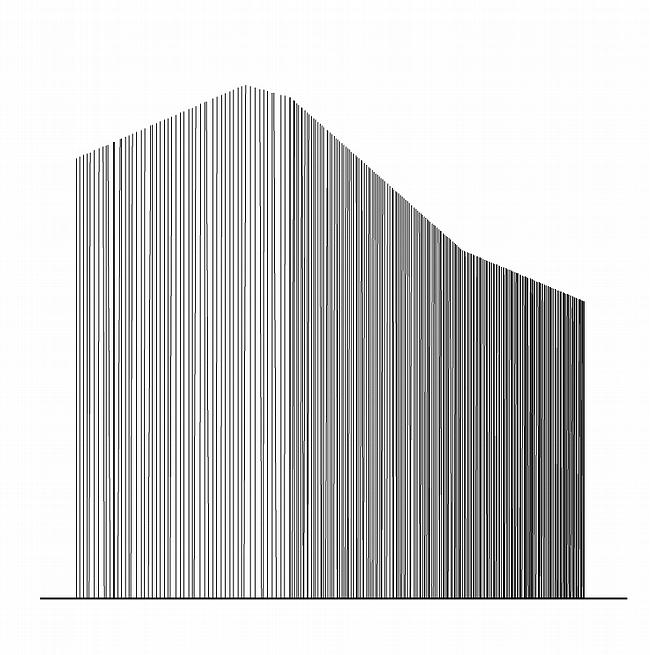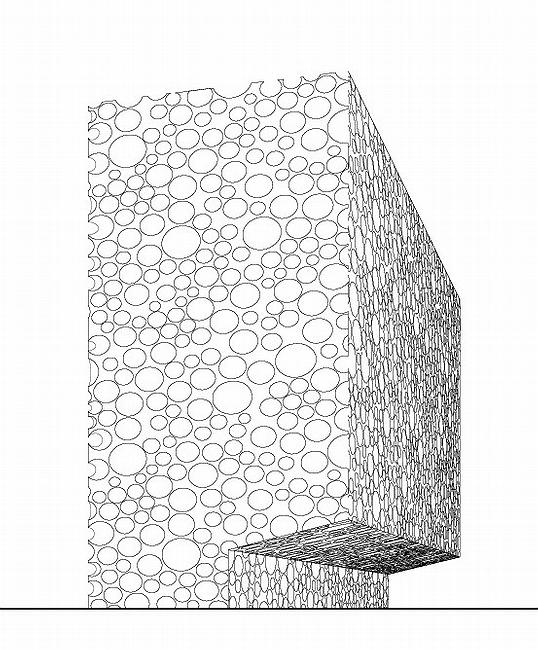Half-a-year ago a developer (‘Vedis group’) acquired the factory. Last spring the company announced a competition for the best project of a residential area to replace the factory. Seven foreign architects took part in the competition; only one Russian architect joined in. A project by Sergey Skuratov reached the second place: the developer liked his concept but was frightened of its unusual, ‘modernist’ presentation.
Here a new trend reveals itself: cult architects are invited to create projects of whole areas within historical city, not just single buildings. Thus new principles of urban planning are being introduced.
First, green yards are to be risen to 4,5 m above roads and pavements – at this level squares covered with grass and even big trees are to be placed. At the lower level there are shops, offices and garages, Thus space has been divided both horizontally and vertically.
The specific of the area is in its permeability. One could say that Skuratov’s concept offers a variant of ‘open city’ that separate public and private space by placing them on different levels. Looking at its model one thinks of a small town where all roads are ‘made’ by water torrents. The road surface is graduated; it has been suggested that pavements would be slightly graduated too. Moreover, many houses beetle over streets, referring to the image of torrent, and at the same time clear room in yards.
The image of the ‘lifted town’ reflects a favourite motive of Sergey Skuratov – the imitation of ‘filling’, when a house is placed into cavity as if it had been covered with soil and later was dug out by archaeologists. In this case the architect uses inverse motion: he raises houses thus telling a different story.
The second feature of the concepts is created by the character of urban environment. Skuratov divided houses into two groups using colour and shapes. Some houses are made of brick and have pavilion roof; others are white and have flat ‘modernist’ roofs. The latter are covered by light limestone
“This concept was born out of the analysis of contemporary town planning” – says Sergey Skuratov. If one extend streets and lanes of adjoining blocks it would become evident that the area has two cross-cut lines –the 2 and the 3 Donskoy passages are directed to South-South-West, while Malaya Kaluzhskakya street is oriented towards South-West. These two lines make an angle of about 150 degrees. Architects place light houses with flat roofs along the first line, while the brick houses are situated along the second line. The resulting composition reminds of military maps. It has a historical parallel since here in 1591 Boris Godunov fought Gazy Geray. The second analogy is abstract paintings by El Lisytsky and Malevich that consist of multi-coloured parallelepipeds that are placed at different angles to each other. The historical parallel seems to be fortuitous
In fact the concept is an artist’s statement about the specific of the area. It is a town-planning experiment for Moscow; most likely it is also the reason why the project did not win the competition. The projects analyses the environment (its colour, light, directions) and produces a result, which does not simply adjust to it but invades the area, absorb and reinterpret it.



